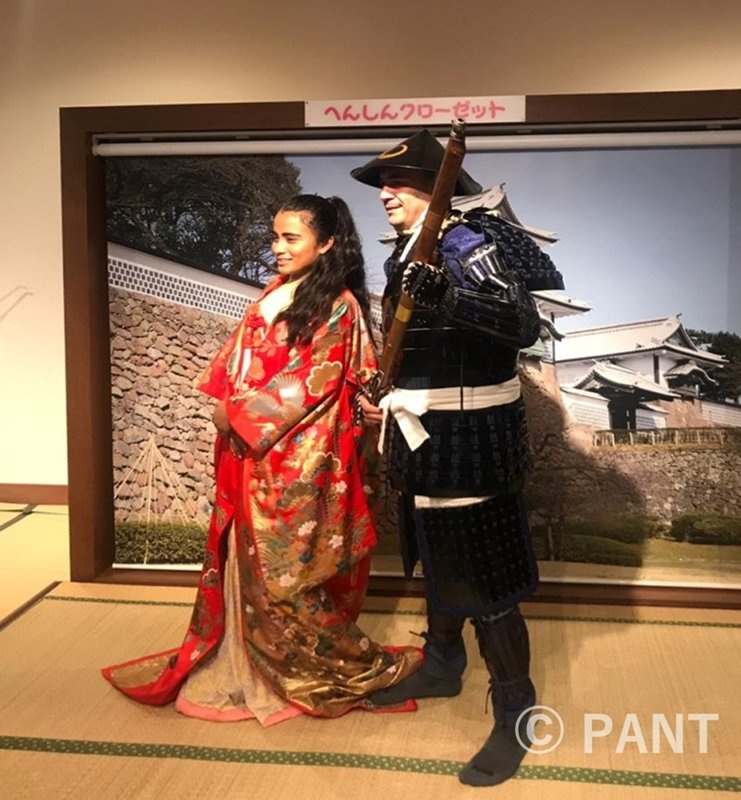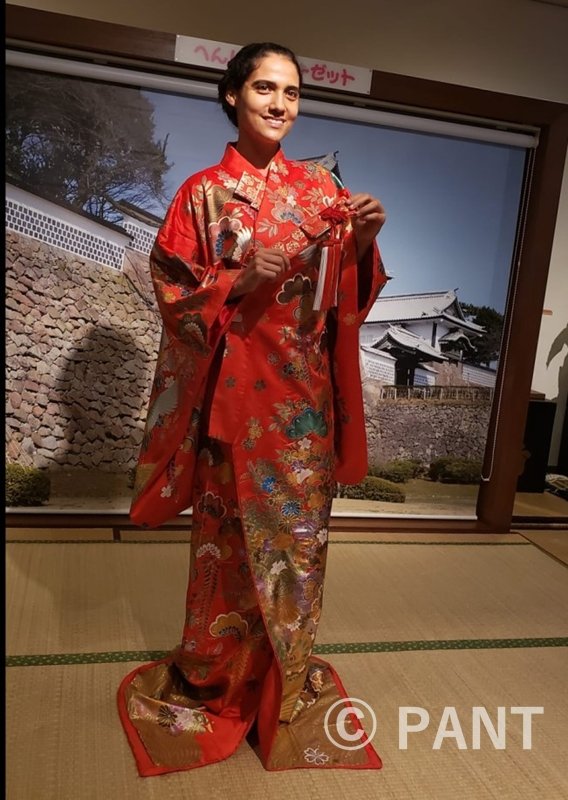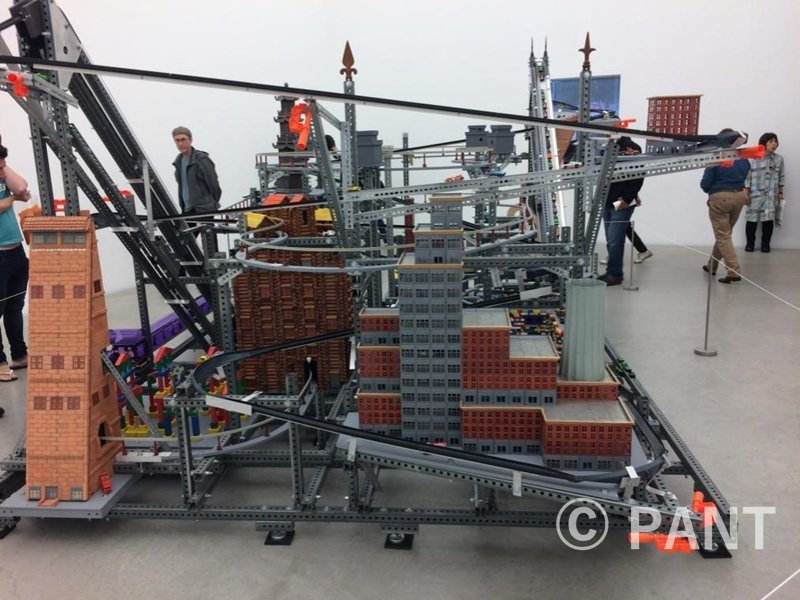Trainees report:Kanazawa Training Program:October 12, 2019
Miguel Ángel Echeverría Tager
(2019/10/13)
Our activities for today, Friday, October 12, took us back to the streets. This time, we visited two of the most popular museums in Kanazawa: the Ichikawa Prefectural Museum of History and the 21st Century Museum of Contemporary Art.
The first museum we visited was the Museum of History. Right after the museum had opened its doors we entered; we were the first visitors of the day and had the museum all to ourselves. The museum tour guide began by excusing herself for not being able to speak Spanish. She told us that the museum is trying to include more guides that can attend groups in other languages. More than half of the tourists she receives come from China and Korea. We already knew that for a fact since we had already seen the statistics that the Section of Tourism of Kanazawa´s City Hall had presented to us a couple of days before. What came as a surprise was that this museum actually offers guided tours in French and in Spanish, but when we were there, guides that lead such tours were not present.
As we walked through the different rooms in the museum we learned about the history of the Japanese people and commented on the hardships and difficulties they have had to overcome to become what they are now. Leadership and organization was the only answer one of the trainees could think of.

The Group of trainees visiting the Ichikawa Prefecture Museum of History
Without a doubt, the best part of the visit was the visit to the workshops. Destined for kids, in these workshops there are various activities where people can participate. Again, just like the tea room in the samurai house we had visited, in the museum there is a school, a kitchen, and a castle where anybody can step into a historical situation: a school during the time of the reconstruction of post-war Japan, a kitchen lit up by fire, and a samurai castle. The most popular was the samurai castle since it was possible to dress up like a samurai and brandish any weapon of choice while someone else captured the moment with a camera. Mr. Cristian Aguilar and Mr. Francisco Cano did not hesitate and immediately went for the samurai costumes. Women were not excluded from the pictures as there was also a kimono to dress-up as Mrs. Samurai. This was a wish that was granted for Ms. Cristel Pineda and Ms. Ingrid Morales who took turns with the disguise. Letting loose the child we all have inside to play with the costumes was a relief from the grave demeanor we had been keeping in Japan. Even the employees of the museum that were helping us broke their self-controlled conduct and laughed out loud with us at the silly poses and faces that Mr. Samurai and Mrs. Samurai were doing.

Mr. Cristian Aguilar and Ms. Ingrid Morales posing as in full costume in the Museum of History

Ms Cristel Pineda´s turn with the kimono
The second museum we visited was the 21st Century Museum of Contemporary Art, but our visit was cut short due to the heavy rain and the strong winds that preceded the arrival of a typhoon. Nonetheless, we had the opportunity to see the work of a couple of the most renowned artists alive today. One particular work of art interested: a room announced as a long term work titled Urban Space that presented a model of a futuristic city with elevated roads connecting buildings above the ground, an underground train transporting people, old and new buildings within the city limits, eastern and western architecture living side-by-side. This work of art was meant to provoke a discussion on the evolution of urban spaces and the planning needed to preserve history without compromising functionality. After spending a week in Japan, we all reflected on the ever-present idea of planning ahead to anticipate problems that the Japanese have. Our discussion quickly led us to think about the difficulties of introducing these ideas to the guatemalan mentality, an almost impossible task that we should somehow undertake.

Urban Space. Museum of Art of the 21st Century
Personally, I wanted to experience another work of art that I already knew was part of the permanent exhibition of the museum: Blue Planet Sky, by James Turrell. I wanted to see what Turrell, an artist known for works of art related to light, had created for Kanazawa, a city that has been awarded prices for its cautious and beautiful nighttime illumination of public spaces.
Blue Planet Sky is an empty white room with stone benches jutting out of the four walls. The room has a perfectly square glassless sunroof that occupies almost all the ceiling; just enough is left for protecting the seated spectators from rain or direct sunlight. Blue Planet Sky portrays the sky as a work of art through the frame that this glassless sunroof represents. Watching the clouds and the rain go by and go through this frame I began to wonder again about the communion of natural beauty and everyday life. The sky can be a work of art just like a garden. It might just be a matter of framing it.
It is a shame that natural occurrences in the weather did not permit us to stay for longer.
